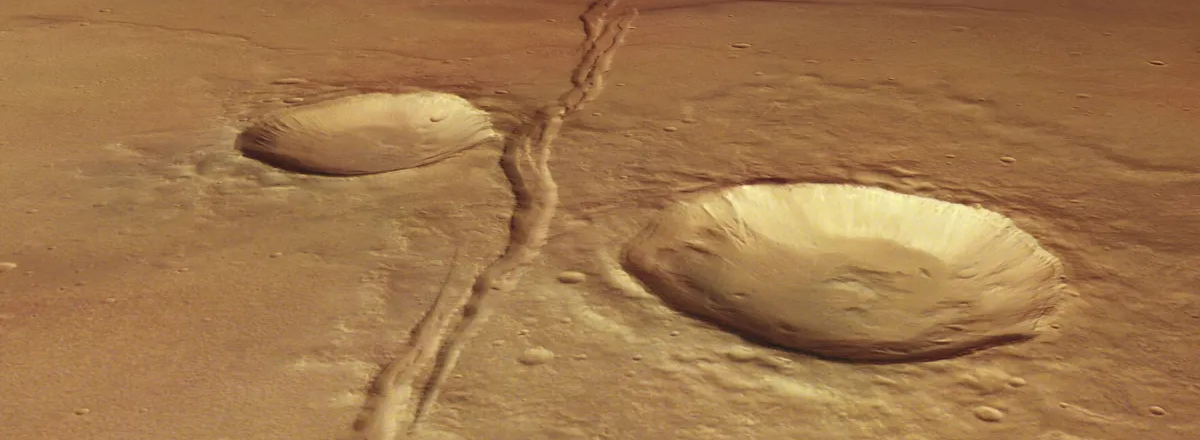Ancient Martian Lake Larger Than Any on Earth Photographed by Mars Express
The lake, which existed around 3.7 billion years ago, covered an area of approximately 1.1 million square kilometers, or about the size of Egypt, and held enough water to fill the Caspian Sea three times over.

The European Space Agency's Mars Express orbiter has captured stunning images of a vast ancient lakebed on Mars, once larger than any lake currently on Earth. The images reveal the dried remnants of Lake Eridania, an ancient Martian lake located in the Caralis Chaos region.
The lake, which existed around 3.7 billion years ago, covered an area of approximately 1.1 million square kilometers, or about the size of Egypt, and held enough water to fill the Caspian Sea three times over.
Scientists believe that Lake Eridania gradually dried up, transitioning into smaller lakes before completely disappearing along with much of Mars' surface water. The lack of a protective magnetic field on Mars allowed solar winds to strip away the planet's atmosphere, leading to the evaporation of its liquid water.
The new images also reveal striking geological features, including two large fissures known as the Sirenum Fossae, which point to past volcanic activity in the region. The presence of raised mounds and wrinkle ridges suggests that volcanic stress shaped the Martian crust as the Tharsis volcanic region formed. Impact craters in the area also show signs of water, indicating that some water remained in the region even after the lake dried up.

